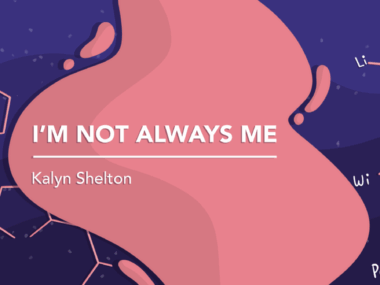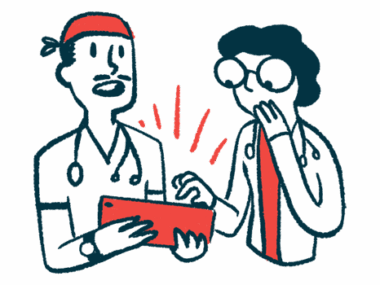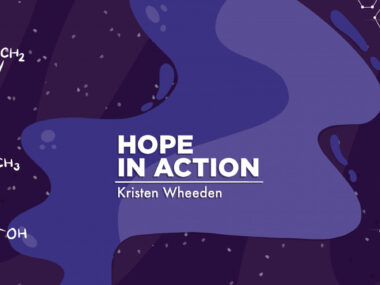With acute hepatic porphyria, our stories are never entirely finished
A columnist bids farewell to her readers with an important message of support
Written by |

When my acute hepatic porphyria (AHP) diagnosis was still fresh, my missing enzyme was to blame for everything going wrong. I didn’t yet know the timeline of my treatments, or how symptoms would ultimately impact my plans. My heart was an anvil, an impossibly heavy chunk of metal. It was the lowest time of my life, my victim era.
I shared pieces of my diagnosis trauma with friends and on social media. It was raw and upsetting, but I was certain that my experiences with two decades of searching for a diagnosis of my mysterious symptoms would help others who were facing something similar.
But one comment stood out: that I shouldn’t share my story until it was over. I sat with this advice for a bit, thinking I was doing something wrong. But the idea of waiting until I have a neatly-tied-up ending implies that there’s an end to my disability, a cure.
Even in that early stage of grieving, before I realized that this logic is ableist, I understood that it was bad advice. Society loves a good tale of restitution and overcoming the odds. But the story of living with rare and chronic disease is never quite finished. More importantly, there is true wisdom and value in sharing the process with others.
Resisting what’s hard
When I started writing this column in late 2020, I wasn’t really ready to share my experiences. Every time I did, I activated my post-traumatic stress disorder.
I harbored resentment toward health providers and shame about medical trauma, and expected that by living cautiously I could avoid porphyria attacks. I believed a series of lies, including that I was only worth what I could accomplish in life, that getting rest was a waste of time, that my disease stole everything, and that I needed to be at a certain point in my life for my age. These themes are universal to the grieving process, regardless of what we may be going through.
As a rare disease community, we spend the bulk of our energy on diagnosing AHP. The disease presents with vague symptoms and an average diagnosis timeline of 15 years. Plus, with the complications and ongoing unknowns of DNA testing, people with positive biochemical tests aren’t guaranteed that a genetic variant will be confirmed.
Once we are diagnosed, we spend the next phase in shock, reliving past medical trauma as we return to healthcare providers, some of whom once gaslighted us. In this state of confusion, pain, isolation, and loss, it’s a small miracle that any of us are able to access the quality, affordable care that we need.
Accepting what is
After a disappointing experience with the medication Givlaari (givosiran), I realized how much I was depending on something external to improve my circumstances rather than accepting my body for what it can do. Between the piercing desperation of an acute attack and the dull blur of an extended recovery, I reached a point where I was powerless. I didn’t cause my AHP, and controlling it proved to be impossible. With this realization came a glimmer of freedom, a choice for a more gentle approach to my body.
I am privileged to be in a position to prioritize my mental and emotional well-being. Therapy is one way, and I’m a huge fan of acceptance and commitment therapy for approaching this drastically altered lifestyle. But I also engage in no-cost methods to help keep me out of the anxiety spiral of survival mode, including daily mindfulness meditations, weekly support groups, and, of course, writing.
None of these coping mechanisms take away the pain or transform my reality, but they do make it easier to find joy in my smaller, more contained life. A painful, unpredictable illness becomes more manageable if I can forgive, find self-compassion, and surrender to my body.
Starting where you are
As I wrote this on my front porch, rain tapped gently against the roof, vibrant red tentacles of peonies emerged from the earth outside the windows, and fat robins bobbed their heads into greening grass in search of worms. Life began to emerge in the nature surrounding my house.
Springtime in Iowa is a special season, a mild, yet sunny reward for months of blustery cold and heavy, wet snow. Perhaps this time of year is why it feels so appropriate to bid farewell to Porphyria News — not as an ending, but as a transformation, an opening to what’s next.
I invite you, my cherished readers, to find new beginnings as well. Try taking out your walking shoes or your paint brushes or your journal and start where you are. It’s exactly where you are meant to be.
Thank you all for the comments, messages, and emails over the years. These connections are the reason I write. They help me remember that even on the days when I feel lonely, I am never truly alone.
Please continue to follow my journey at my website, DaringlyClaire.com.
Note: Porphyria News is strictly a news and information website about the disease. It does not provide medical advice, diagnosis, or treatment. This content is not intended to be a substitute for professional medical advice, diagnosis, or treatment. Always seek the advice of your physician or other qualified health provider with any questions you may have regarding a medical condition. Never disregard professional medical advice or delay in seeking it because of something you have read on this website. The opinions expressed in this column are not those of Porphyria News or its parent company, Bionews, and are intended to spark discussion about issues pertaining to porphyria.







Shannon Sell
I loved Claire's newsletter; the information and honesty she shared were astounding and moving.